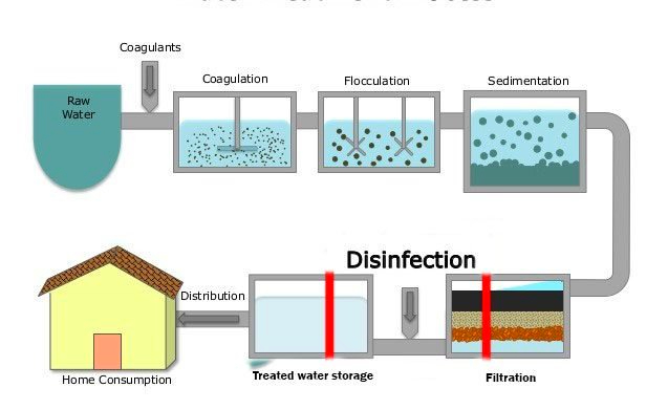.png)


Have you noticed your tap water getting worse over the years? You’re not alone. This past summer, many homeowners in North Shore communities voiced concerns about their water’s unpleasant taste, smell, and even discoloration. While these are the most obvious symptoms, they’re only part of a larger problem. To understand what’s going wrong with our water, it’s important to explore where it comes from, how it’s treated, and the threats that loom over our precious water supply.
Where Does Our Water Come From?
Most public water systems rely on one of two main sources: wells and reservoirs. Both present unique challenges.
Well water tends to have higher levels of minerals like iron, calcium, and magnesium, making it ‘hard’ and prone to clogging pipes and fixtures.
Reservoir water, on the other hand, is ‘soft’ but is more susceptible to stormwater runoff, algae blooms, and microbial growth.
Water is treated before it reaches your tap, but the processes used can vary significantly. Some towns have advanced filtration systems, while others rely on basic methods like coagulation and sediment settling. Many water systems add disinfectants like chlorine and fluoride, but aging infrastructure and outdated methods leave our tap water at risk. By the time water travels through decades-old pipes into your home, it’s no wonder that many households don’t trust their tap water anymore.
Current and Future Threats to Our Water Quality
1. Aging Infrastructure
Our water distribution systems are aging, and the pipes that carry water to our homes are often decades old. These pipes accumulate deposits, rust, and gunk over time, which can break off and flow into your home’s water supply, clogging fixtures and damaging appliances. Without major infrastructure upgrades, this will continue to worsen.
2. New Pollutants: Microplastics
Microplastics are one of the fastest-growing threats to our water. These tiny plastic particles come from the waste we generate—especially the 35 billion single-use plastic bottles Americans throw away each year. As these plastics break down, microplastics make their way into our water, and we unknowingly consume them through tap water and even in the food we eat.
3. Hazardous Chemicals: PFAS/PFOA
One of the most concerning water contaminants is PFAS (Per- and Polyfluoroalkyl Substances), often referred to as "forever chemicals." These harmful substances are present in many everyday products, and most towns across the U.S. have some level of PFAS in their tap water. Exposure to PFAS has been linked to serious health risks, including cancer, making it critical to remove them from your water supply.
4. Cyanobacteria from Fertilizer Runoff
For towns that rely on reservoirs, such as Newburyport and many other North Shore communities, cyanobacteria are an increasing issue. Fertilizer runoff and stormwater contribute to the growth of this harmful bacteria, which can make the water unsafe to drink and cause an unpleasant taste and odor.
How Can You Protect Your Home's Water Quality?
The reality is that tap water is no longer as clean and safe as it once was. With aging infrastructure, new contaminants, and environmental changes, the risk of drinking unsafe water is growing. But you don’t have to wait for a municipal overhaul to ensure your family’s water is pure and safe.
Installing a whole-house water filtration system is one of the best ways to protect your home’s water supply. These advanced filtration systems can remove harmful contaminants like microplastics, PFAS, and cyanobacteria, giving you peace of mind that your water is safe to drink, bathe in, and use for cooking. Whether you get your water from a well or a reservoir, a whole-house filtration system ensures that every tap in your home delivers clean, healthy water.
Take Control of Your Water Today
The quality of our tap water isn’t what it used to be but with a whole-house filtration system, you can protect your home from harmful contaminants and enjoy clean, fresh water every day.
Don’t wait for the water in your home to get worse.







